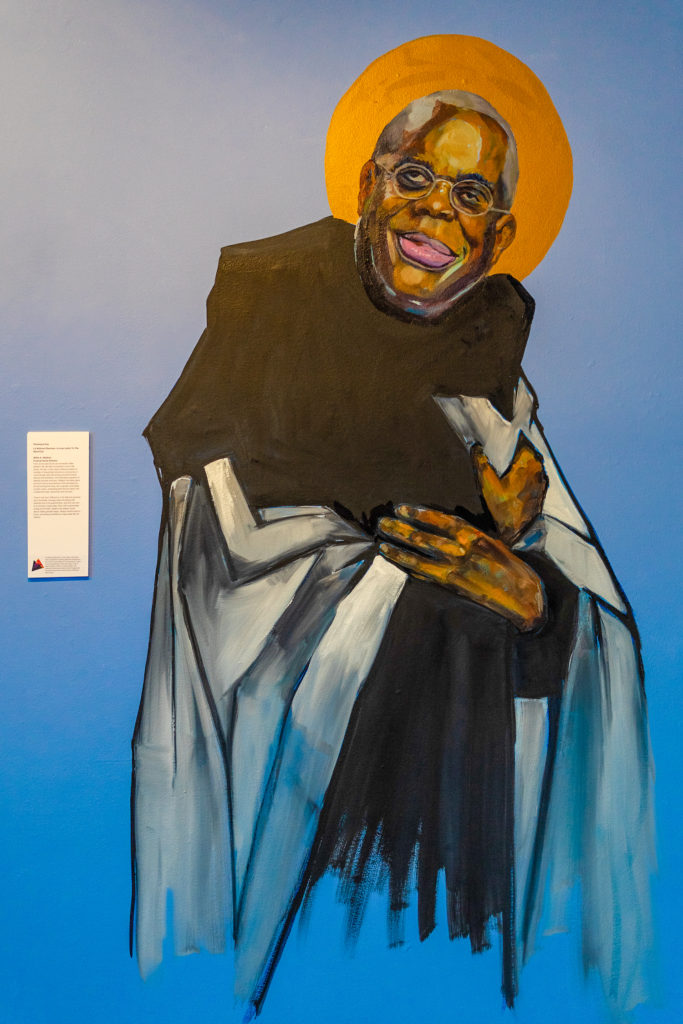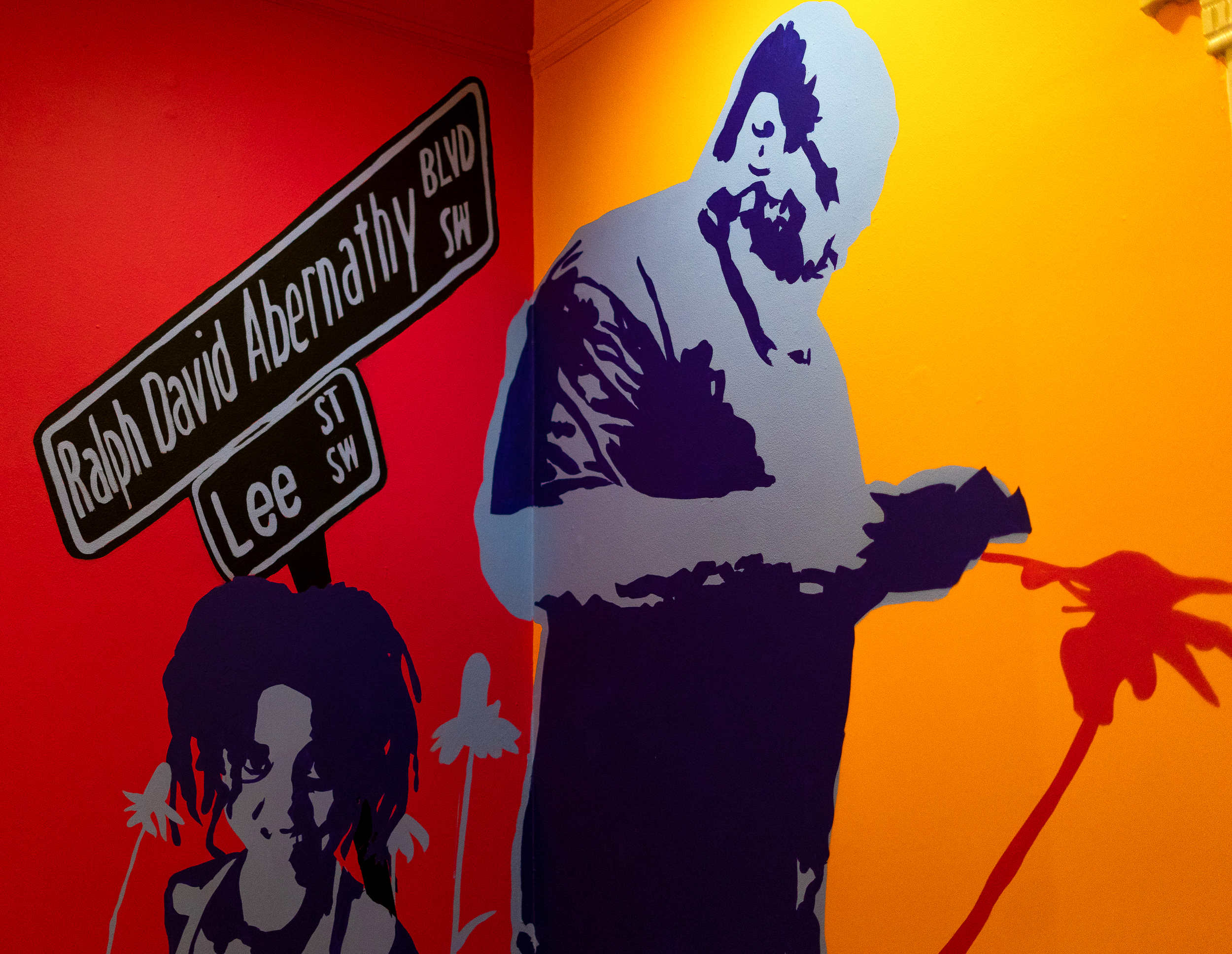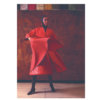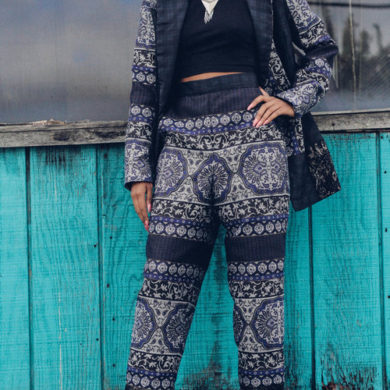My first time feeling a Shanequa Gay work was earlier this year when I was an intern at Art Papers magazine in Atlanta. The publication hosts an annual art auction, and we were blessed with the opportunity to be a part of the setup and day-of operations. Year after year, artists donate select pieces to raise funds for the non-profit organization, an altruistic act that helps facilitate Art Paper‘s programming, publishing, and work among the local art community.
Gay’s contribution, titled “Morning Glory, Cottage and Watermelon Offerings,” was the piece after my own heart and pockets. It hung at a mere 6×12 inches (oil, acrylic, and print on wood panel), but felt much grander. In the work is a woman with the head of a horned animal in shades of blue, a marker of Gay’s that invokes mythological themes. The figure is familiar, yet has no identifiable face. There is dialogue, but no words; you have to read it through feeling. I wasn’t lucky enough to take that piece home as I had hoped, but I left that internship with something else – an obsessive curiosity about the woman with whom I share a name.
Since that introduction to Gay’s work, I’ve encountered her at Flux Projects: Ponce City Market and bantered with her on Instagram. We’re friends, in my head of course. So, I was thrilled to view her current solo exhibition at the Hammonds House Museum titled, “Lit Without Sherman: A Love Letter to the West End.” Gay takes viewers on an excursion of the Atlanta neighborhood’s rich, eclectic history through engulfing murals depicting local staples (the neighborhood kids hanging out), and notable figures stylized as deities, such as playwright Pearle Cleage, real estate broker Lottie Watkins and activist Jamil Abdullah Al-Amin. While encompassing the museum’s wall are the various “Saints” of the West End, the first floor submerges us into the city’s vibrant HBCU culture. She pays homage to the Atlanta University Center (AUC) – a defining sector of the West End – notating some of its most recognized thinkers and scholars, supported with emblems of Clark Atlanta University, Spelman College, and Morehouse College. The effort to provide background information on each of the themes and figures covered could easily be packaged as an in-depth research paper. I wonder if this exhibit began as such. As formal and informal research.
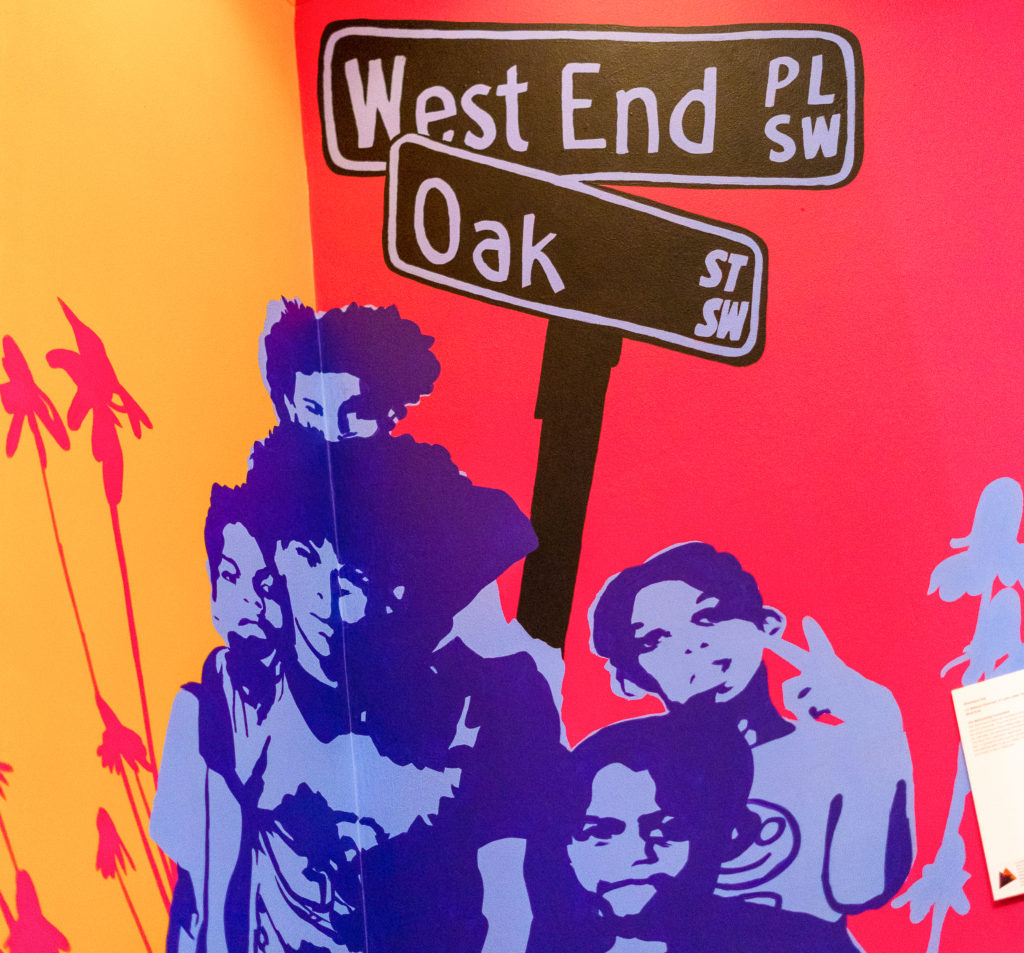
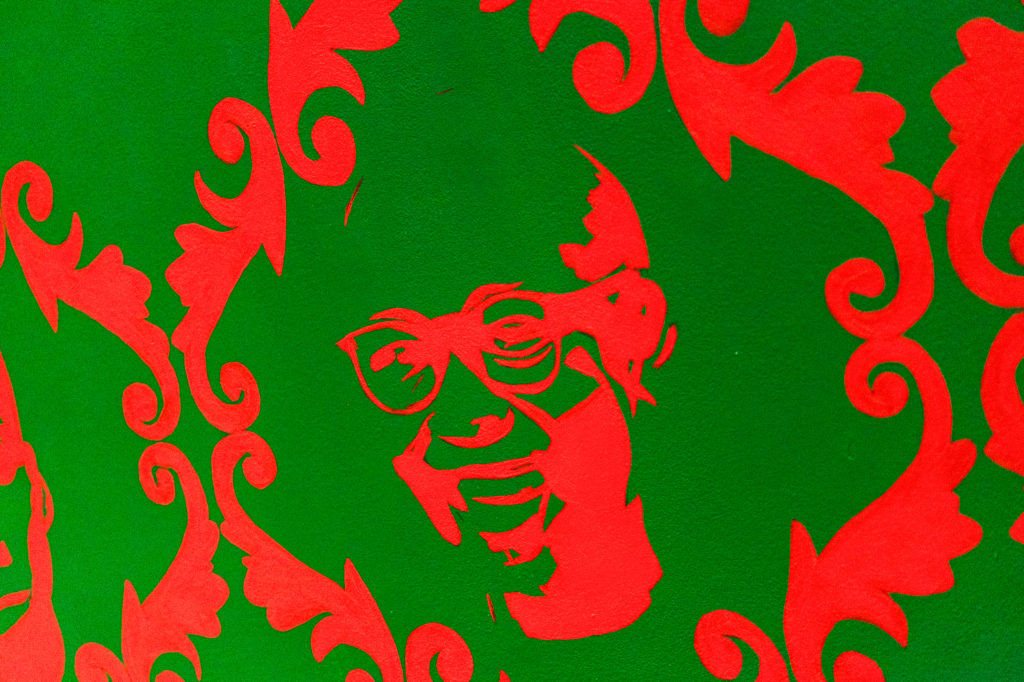
Gay adds a multimedia component, too – inviting us to grab a seat to listen to West Enders recount their experiences on forming communities, identity, and creating art influenced by this sacred space. Strolling through the two-story takeover of Hammond House, you get a well-rounded sense of the West End’s magic. Its beautiful complexities lay at the junction of struggle and triumph, of strength and tenderness. In the grandest of manners, “Lit Without Sherman” reminds us of the West End’s resilience, mirroring the spirit of its Black population, and how the people and neighborhood evolve alongside each other.
As an Atlanta transplant, I’ve had a limited understanding of what made the West End feel so special. Gay’s “Love Letter” allowed me to delve into the nuances I couldn’t quite weave. Now I know why going to Tassili’s reminds me of the ital food spots back home in Jamaica. Now I know why walking over to the natural goods store feels like a stroll down St. Ann’s Bay’s market back. It all made sense in a matter of an hour.
As Atlanta’s gentrification problem increasingly threatens the integrity of spaces like the West End, Gay’s exhibition could not be more poignant and timely. Through her art and scholarship, “Lit Without Sherman” is more than a love letter; it is a course on the neighborhood that amplifies its diasporic culture and highlights the West End’s powerful past and present.
